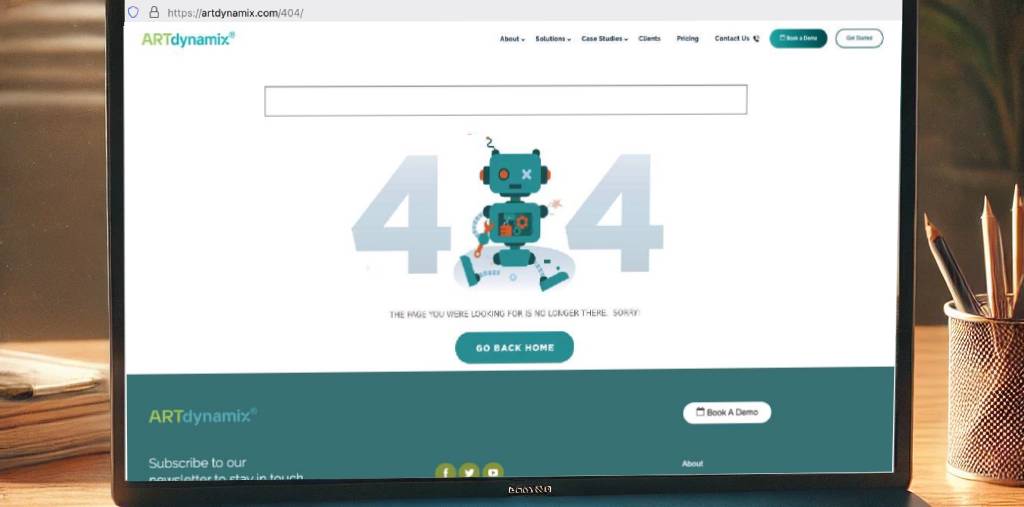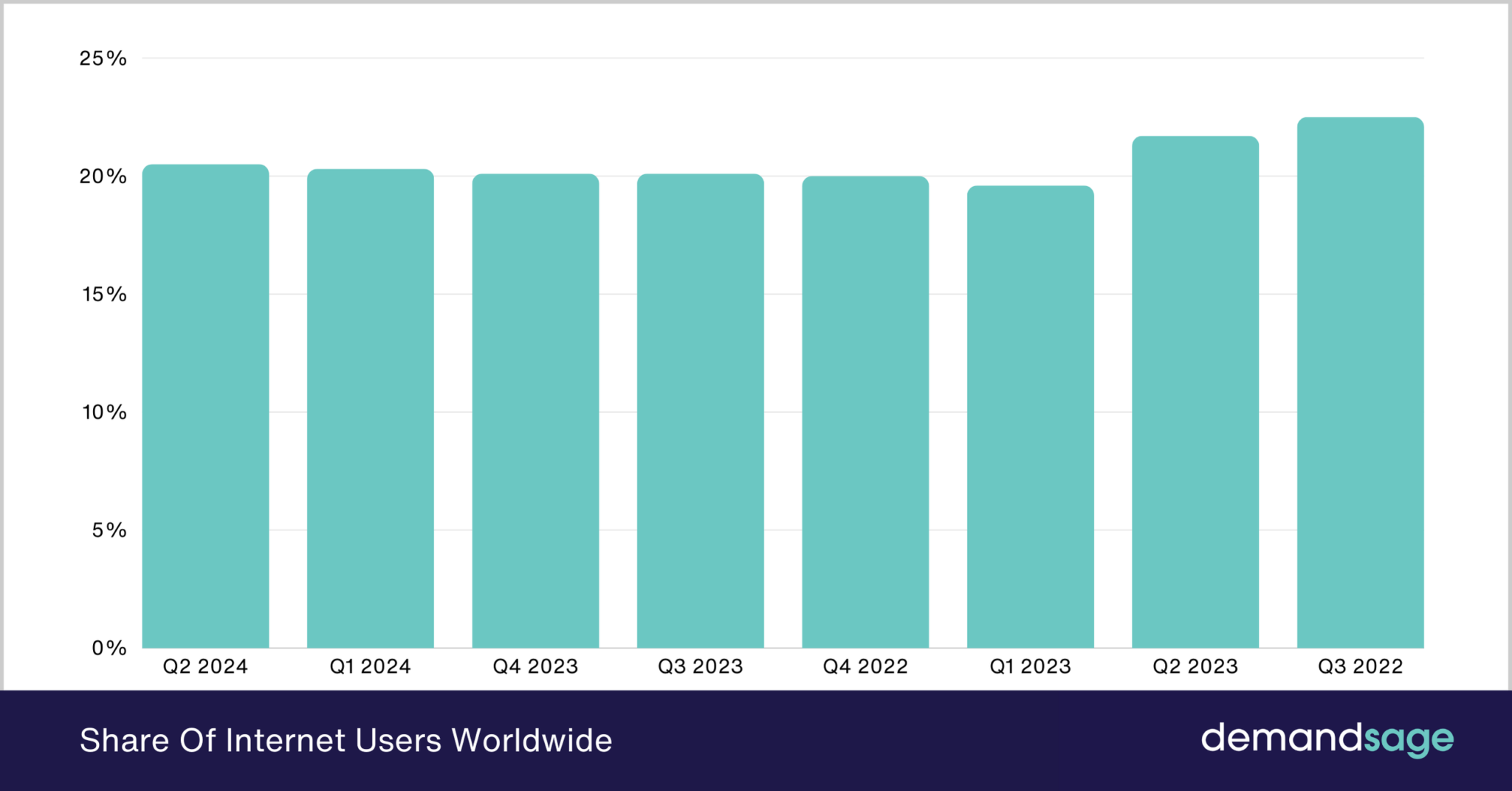Key Highlights
-
-
- The Big Picture: Podcasts are rapidly migrating from personal listening devices to living room big screens, fundamentally transforming how audiences consume audio-visual content at home.
- Platform Evolution: Smart TV content platforms have become major destinations for podcast consumption, with connected television devices showing steadily increasing viewing numbers over recent years.
- Visual Revolution: Content creators are investing heavily in production values, set design, and visual aesthetics to make their shows TV-ready, creating a new hybrid genre that combines podcast intimacy with television production quality.
- New Revenue Opportunities: The shift to connected TV has opened unprecedented monetization possibilities beyond traditional ad-based models, including premium subscriptions, interactive advertising, and advanced audience targeting.
- Audience Expansion: Television format makes podcast content accessible to casual viewers who might not have been attracted to traditional headphone-based listening, significantly expanding the potential audience demographic.
-
The effects of streaming TV
The family room is having a comeback. What used to be a sole territory of a conventional TV content has transformed into a vibrant ecosystem or a digital media trend meets streaming TV content and generates completely new kinds of viewing experiences. Leading the charge in this change is the explosive growth of podcast listening on streaming TV, completely transforming the way audiences are listening to audio-visual content at home. This move comes amid a larger scope of podcast Junction as industry statistics and studies note the speedy development and growing popularity of podcasts in many markets.
The Great Migration: From Earbuds to Big Screens
The story of the Podcasts as a niche audio content to a mainstream entertainment format has been extraordinary. After being relegated to personal listening devices and headphones, podcasters are experiencing an unprecedented evolution as their shows are given new life on 55 inch screens in millions of homes around the globe. The audience of podcasts around the entire world is expanding extremely fast, and it is expected that hundreds of millions of people will be listening to podcasts in the coming years. That development is not a mere platform shift but rather a rethinking of how that intimate conversation and long-form discourse can be engaging to an audience in a shared viewing space.
The unlikely trigger of this change has become Smart TV content platforms. The addition of advanced streaming apps and intuitive interfaces has enabled it to become extremely easy to find, access, and listen to podcast content via their television screens. This accessibility advancement has paved the way to new demographics that were not served well by the traditional means of podcast distribution, giving the content makers a chance to potentially reach an audience beyond the realm of devoted podcast listeners. The alterations in the podcast listener demographics in the recent past, in terms of the age, gender, regional representation, etc., highlight the diversification and the increasing popularity of the podcast audience.
Statistical figures draw quite an interesting picture of this migration. According to data provided by the industry, connected television devices have become a significant part of the podcast consumption, and the viewing numbers are steadily going up over the course of the last several years. Podcast listeners have also shown great loyalty and engagement with the number of monthly listeners growing increasingly. The majority of listeners tune in to podcasts via the most popular platforms, including Spotify, Apple Podcasts, and YouTube, and the selection of the platform is an essential element to ensure maximum visibility and response. This growth trend implies that smart TV content platforms are not just trying to shoe-horn podcast content into their offerings as an after-thought but are instead actively transforming themselves into major destinations for this kind of content.
Understanding the Streaming Platforms’ Advantage
The intuitive nature of listening to podcasts via connected TV is obviously much more than a mere convenience. The lean-back nature of watching a TV show or movie provides an entirely distinct usage habit to that of mobile or desktop usage. When viewers sit in their living rooms and watch podcasts on big screens, they prove to have much longer attention spans and they get much more involved into the material presented.
This longer watching time is conveyed into real gains both to the content makers and the advertisers. Such opportunities are beneficial to both podcasters and marketers, as the engulfing atmosphere of the TV space diminishes the competing distractions that haunt mobile viewing, where the notifications, messages, and other apps are forever fighting over the user attention. On the contrary, the concentrated nature of television viewing enables podcast content to receive full attention over prolonged durations.
The trend in digital media streaming suggests that this movement towards a television-centered consumption is part of a larger shift in audience approach towards entertainment. The contemporary audience is more willing to have a great experience offering the convenience of digital media and the social elements of the usual TV watching. Smart TV content platforms have managed to find the right compromise between these two domains, providing the flexibility of on-demand digital streaming, but retaining the aspects of socializing and immersiveness that make watching television so special.
The Visual Evolution of Audio Content: Rise of Video Podcasts
Arguably, the biggest change that is happening to the podcasting environment is the fact that the industry is adopting visual storytelling. The content creators that used to focus on pure audio experiences are now spending a lot on production values, set design, and overall visual aesthetics to make their shows TV-ready. The move marks a sea change in how podcasts should be considered effective content during the connected TV era. In this trend, the emergence of video podcasts, which incorporate both audio and visual features, plays a prominent role, as it provides a different experience than that of audio-only podcasts and reaches the audience that wants to watch content on YouTube and Spotify.
This shift in creating content that is audio-first to video-optimized has led to a whole new genre of programming which takes the intimacy of a traditional podcast and applies television production quality to it. Producers are trying out dynamic cameras, complex lighting systems, and highly selective visual surrounding that support and do not overshadow their speech content. This development has transformed podcasting beyond a mere listening medium to a fully blow audio-visual experience that can compete with anything on the traditional television in terms of production values. One of these new forms is the genre of true crime which has become a popular genre of podcast, as it has access to visual adaptation, and is one of the most popular among the listeners.
The evolution of Smart TV content platforms has led to platforms creating special interfaces and recommendation systems to surface visually exciting podcast content. When it comes to the viewers of television, these platforms understand that they require a degree of visual polish and have optimized their algorithms and promotional strategies. This has created an ecosystem where creators who put money into the quality of their visuals production can be rewarded, without losing the authentic, conversational feel that made successful podcasting in the first place.
Monetization and Market Opportunities
The shift of podcasts to connected TV has opened up monetization possibilities never seen before and that go well beyond the conventional ads-based model. Smart TV content platforms provide creators with several revenue streams, such as premium subscriptions, interactive forms of advertising, advanced audience targeting options that take advantage of the wealth of data connected television viewing habits can provide. As podcast ad revenue is rapidly increasing, ad revenue is becoming a more significant measurement of profitability that creators are maximizing in this new environment.
The advertising experience of television-listened podcasts is night and day different compared to the usual podcast advertisement. The brands are now able to add visual aspects, demonstration of their products, and interacting elements which were nonexistent in audio-only standards. This increased ad targeting ability has helped in attracting high quality advertisers who until recently, considered podcast sponsorships as a secondary to television advertising purchases. The efficiency of podcast advertisements to reach the audience and promote brand recognition has contributed to a significant rise in advertising costs and subsequently the generation of broader revenue channels to the successful podcast producer.
The trend in digital media streaming implies that the evolution of monetization has only just begun. With smart TV content platforms likely to further advance the advertising technologies and audience measurement precision, the monetization opportunities of podcast creators working in the television context are expected to increase greatly. Those early adopters who are able to migrate their content to television-friendly formats are putting themselves in good positions to take advantage of future growth prospects. The statistics of podcasts are important in determining the success and the maximization of the revenue models as the industry moves forward.
Consumer Behavior, Podcast Listener Demographics, and Viewing Patterns
This movement in connected television podcast listening is indicative of greater shifts in consumer media behavior and preference. The audiences of today are also demanding more and more of the content that gives them flexibility, without compromise on quality and interactiveness. Smart TV content platforms offer this balance, bringing on demand access to premium programming into the comfortable, familiar setting of watching TV at home.
A study of the viewing habits provides intriguing details regarding the way the viewers engage with the material presented in podcasts on the TV screens. As opposed to background entertainment that traditional television programming can be, television-consumed podcasts seem to demand active listens much like high-quality documentary or interview-based programming. Such listening behavior implies that podcast viewers on television tune in to watch as appointment viewing as opposed to background noise. The number of listening hours has emerged as an important indicator of audience engagement with some genres such as comedy having the highest number of listening hours.
The television podcast consumer demographic is also largely dissimilar to the conventional podcast listeners. Connected television viewing brings the viewers who might not have been attracted to the podcast content because of the personal experience of listening with headphones or the time investment needed to listen attentively. Television format allows making the podcast content more accessible to the casual viewers without sacrificing the depth and authenticity that the dedicated podcast fans appreciate. The weekly podcast listeners, consistent podcast listeners, and super listeners, who listen to five or more hours of podcast per week, are the highly engaged group and most important to influence content strategy. The engagement of regular listeners is high especially among the younger category of 12 to 34-year-olds, but a drop in regular listeners is evident among the older generation of 55+.
Technology Infrastructure and Platform Development
The technical system that enables the consumption of the podcast on the content platform of smart TVs is a considerable success of the streaming technology and the user experience design. These platforms have to meet the challenge of both high-quality video delivery and offer smooth audio syncing and interactivity features which improve viewing experience. Besides smart TVs, the emergence of smart speakers and mobile has ensured that audiences have even more options to listen to podcasts, so platforms have had to ensure their technology can accommodate these newly popular listening formats.
Sophisticated recommendation algorithms are the key to successful television podcast consumption. Such systems will have to learn the subtle distinctions in preferences of audio and visual content as well as take into consideration the shared aspect of watching television. In contrast to personal device consumption, watching TV can involve many people in a household, which needs advanced algorithms capable of compromising between various preferences and watching situations. The increase in owners of smart speakers interacting with podcasts also indicates the necessity of platforms to tailor suggestions to customers that listen to content via smart speakers and other connected devices.
Another factor that has played a pivotal role in increasing adoption is the creation of dedicated user interfaces (TVs) to consume podcasts. Such interfaces need to support the specific navigation demands of TV remote controls and offer simple entry points to episode guides, creator biographies and similar content. The most successful smart TV content platforms have created easy-browsing interfaces that have made podcast discovery as easy as surfing through traditional television channels. The role of online audio platforms, like Spotify, in defining the discovery and consumption of podcasts on other devices, including smart speakers and mobile devices, is important.
Content Creator Adaptation Strategies
Adaptation to podcast consumption on TV means that the creators should reconsider their approach to the content development and production fundamentally. Most successful producers have adopted hybrid models that retain the conversational sincerity of the traditional podcasting but adds visual effects that improve the watching experiences of televisions. Podcast hosts, and podcast hosts and their teams are important in the management, production and analysis of the content so that it can be optimized to suit both audio and visual consumers.
Television-optimized podcasts require more consideration than just a basic video capture to create. The producers of successful shows spend money on professional lighting, a variety of camera perspectives, and well-designed set pieces that allow building visually interesting spaces without distracting too much attention away form the conversations. Furthermore, the manner and timing of releases adopted by creators is also becoming a factor, and the trends indicate that consistent release times and consideration of podcast episode length and frequency can have a vast effect on audience reception. This visual attractiveness and content reality balance has come to be a key feature of hit television podcast shows.
The television consumption also needs the modification of content pacing and structure. Whereas the conventional podcast can stick to the audio prompts and vocal transitions, the television models gain value through visual diversity and well-placed pauses that cater to the variable attention spans of the screen-based watching. It is also largely due to the discovery of new podcasts as well as how new podcast episodes are formatted to be viewed by television audiences, creators are testing out different formats that appeal to new viewers as well as retain the interest of current audiences. Producers who have been able to localize their productions know these nuances and manipulate their programming to take these into account.
Competitive Landscape and Platform Differentiation
Increasingly, the smart TV content platform competitive landscape has been going up a notch as the largest streaming services take note of the growth opportunity presented by podcast programming. How podcasts are integrated into each platform varies, resulting in different, ecosystems with their own benefits and drawbacks to creators and consumers. Other podcasters are marking their performance and strategies against competition as the number of players rises in this dynamic market.
There are those platforms that emphasize the connection with current podcast databases and delivery systems and those that concentrate on creating unique programming that is meant to be watched on television. These varying options open up varied possibilities to creators and demand strategic work on which platform to partner with and how to distribute content. The importance of popular podcasts and the most popular types of podcasts, including comedy, news, and true crime, can be seen through their capability to gather big audiences and cause activity on these platforms.
The platform differentiation activities are also directed to the peculiar options and functions that improve the experience of watching television podcasts. This can comprise interactive features, social watching options, or high-tech personalization options that generate competitive edges in helping to draw both creators and viewers to particular platforms. The popular genres of podcasts are also featured on the platforms to distinct their uniqueness and attract their choices of listeners.
Future Implications and Industry Evolution
The trend in podcast listening via connected TV devices portends a major implication to the entertainment industry at large. The podcasting industry and podcast industry are evolving the production and distribution of content at a very high rate, and both industries are expanding in a way never seen before. The recent Infinite Dial, Edison Research, and Triton Digital data support the idea of the industry of podcasts growth and emphasize the rising value of the market, the number of listeners, and the growing popularity of podcasts.
The trend in digital media streaming is that the present shift towards television-driven podcast consumption is merely the beginning of a much bigger shift in the manner in which audiences find, consume, and connect with long-form content. The main reports in the industry in recent years, such as those by Edison Research, and Edison Podcast Metrics, provide key insights concerning the demographics and engagement of listeners. The number of podcasts added in the last few years, the number of podcasts monthly, monthly podcast engagement, and the number of listeners who have ever listened or listened to a podcast have also grown considerably in the last month and even the past week.
This shift has longer term implications that are not related to mere platform migration. The television-ization of podcasts material is already giving birth to new hybrid programming forms that bring together the strongest traditions of several media. The industry statistics indicate a gradual increase in the number of listens, the number of listeners, the number of podcasts available, and the average length and frequency of podcasts. Also, the remaining trends are connected with the way people listen, listen, listening to podcasts, and podcast listening, showing the tendency towards using different devices and platforms to consume the content, with listeners using smart TV, smartphone, and streaming services to listen to podcasts.
With the introduction of new formats, reaching various audiences and target audience knowledge to ensure the optimization of engagement across various demographical factors are increasingly becoming important. Launching your own podcast has gotten more practical and meaningful, and canadian listeners, american podcast listeners, and data on how americans listen have become factors that drive content strategies. The Joe Rogan Experience has become one of the most popular podcasts and a great example of what reach and influence one could have in the industry. Last but not least, ads listened and ad revenue remain one of the greatest forces of the industry, as advertising is one of the key factors in podcast monetization and growth in general.
Strategic Considerations for Industry Stakeholders
The strategic implications of the emergence of television podcast listening habits on content makers, advertisers, and platforms runners require cautious attention and consideration. Reaching new audiences via connected television devices is an opportunity that is accompanied by the necessity to produce more and the need to modify the approach to the audience that does not happen automatically and needs careful consideration. In that regard, the use of podcast stats and podcast statistics becomes central to making the right decisions, knowing the demographics of listeners, as well as monitoring trends in the industry.
When programming is designed to be viewed on television, content makers must consider the cost of production versus a possible increase in the audience and revenue potential. Initial data indicates, those creators who figure out how to make this transition successfully can experience enormous audience growth, yet the financial costs and learning curves are high.
The advertisers need to rethink their approach to podcast sponsorships in a world where visual components and TV-level production standards are getting more and more significant. The advanced advertising capabilities of the smart TV content platforms demand alternative creative efforts and investment distributions than the customary podcast advertising. Streaming audio services such as Spotify are also becoming increasingly important in creating advertising campaigns, since such services have a significant share in the digital music and podcasts contents, which generate huge traffic and increase audience engagement.
Conclusion: Embracing the Connected Future
The increase in the consumption of podcasts on smart TV content platforms is not just a change in technology, but it is a sea change in the way audiences are experiencing conversational media at home. With the trends in digital media streaming shows no signs of stopping towards favoring flexible and high-quality programming that can adapt to a variety of viewing situations, the inclusion of podcast content into connected television ecosystems can be considered a permanent and growing trend.
These changes present crisply defined opportunities to the creators, platforms, and advertisers who can identify and adjust to the evolution. The shift of podcasting as a niche audio platform to a mainstream television programming format teaches us that the modern media consumption is dynamic and one should always be ready to change in the ever-evolving digital world.
Looking to the future, it is likely that audiences are craving content that brings together the candidness and richness of conversational-based content with the visual nature and social aspect of watching TV as it has always been seen. Smart TV content platforms which are iterating and improving upon these experiences will increasingly play more central roles in how we find, watch and share meaningful content in our connected homes.






